Picture if you will two titanic powers struggling to see who will be the first to conquer space. Between them, they have the best scientists in the world, many of whom they “borrowed” from Germany after the Second World War. They are sparing no expense, and that includes the cost in lives, in order to be the first to get a human being into space.
Sound scary? Well, if you were an American astronaut or a Soviet cosmonaut in the 1960’s, it sure would be! But for men like Yuri Gagarin, the first man to go into man in space (and also the first man to orbit the Earth) the rewards would last a lifetime.
Early Life:
Like most heroes of the space age, Gagarin’s story began in his infancy. Born to Alexey Ivanovich Gagarin and Anna Timofeyevna Gagarina in the village of Klushino, Russia (Smolensky Oblast) on March 9th, 1934, Yuri Alekseyevich Gagarin began his life on a collective farm and witnessed some terrible things in his early years.
In 1941, the village was occupied by the Nazis, and the Gagarin family was forced to relocate to a mud hut on their property as a German officer took possession of their house. His two older siblings were deported to Poland for slave labor in 1943, and did not return until after the war in 1945.
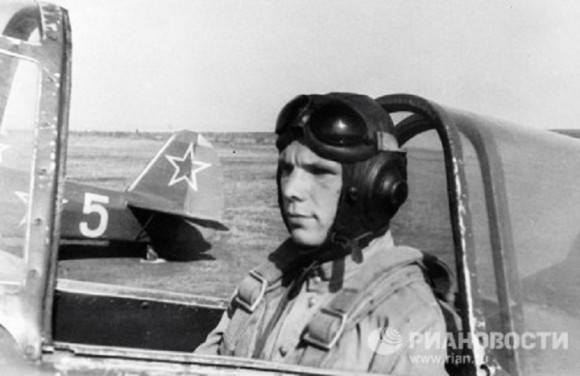
Another version of Gagarin’s biography suggests that the family relocated east of the Urals ahead of the Nazi advance, and returned to the region after the war. In either case, by 1946, the family moved to the nearby town of Gzhatsk, where Gagarin continued his secondary education.
At the age of 16, Gagarin entered into an apprenticeship as a foundryman at the Lyubertsy Steel Plant near Moscow, and also enrolled at a local “young workers” school for seventh grade evening classes. After graduating in 1951, he was selected for further training at the Saratov Industrial Technical School.
While there, Gagarin volunteered for weekend training as a Soviet air cadet at a local flying club, where he learned to fly biplanes and the Yak-18 trainer. He graduated from technical school in 1955, and was drafted into the Soviet Army.
Pilot:
In 1957, he was sent to the First Chkalov Air Force Pilot’s School in Orenburg, where he trained on Mig-15 jet fighters. While there, he met Valentina Ivanovna Goryacheva, a medical technician graduate of the Orenburg Medical School. The two were married on 7 November 1957, the same day Gagarin graduated from Orenburg.
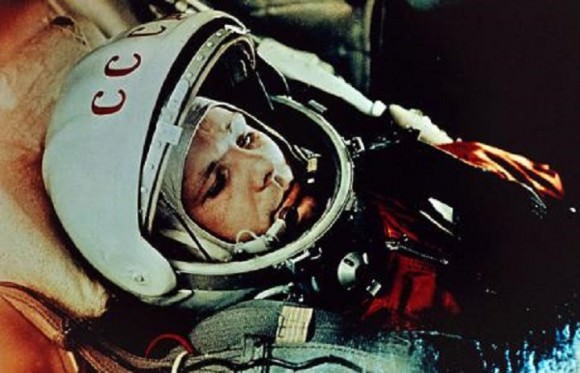
By 1960, Gagarin had earned the rank of Senior Lieutenant and had come to the attention of the Soviet space program. After a rigorous selection process, he became one of 20 pilots selected to become a cosmonaut, and was further selected to be part of an elite training group known as the Sochi Six – from which the first cosmonauts of the Vostok program would be chosen.
Vostok Program:
Out of the twenty selected, Gagarin and fellow cosmonaut Gherman Titov were selected to be the first cosmonauts to go into space. This was due to a combination of factors, including their performance during training sessions, their height (since space was limited in the small Vostok cockpit), and by an anonymous vote by the members of the program.
Gagarin’s historic flight took place on April 12th, 1961, roughly one month before NASA was able to put a manned spacecraft of their own into space. His spaceship, the Vostok 1, weighing approximately 4700 kg (over 10,000 pounds), was quite primitive by modern standards. For starters, the craft wasn’t even piloted by Gagarin himself, mainly because the Russians had not yet tested the effects of weightlessness on any humans (only dogs!).
The actual flying was done by crews on the ground. It also had no maneuvering capabilities and consisted of a re-entry craft and service module. The cosmonaut was not even allowed to land in the re-entry craft because it was deemed too dangerous, and had to instead leave the craft and parachute to the ground.
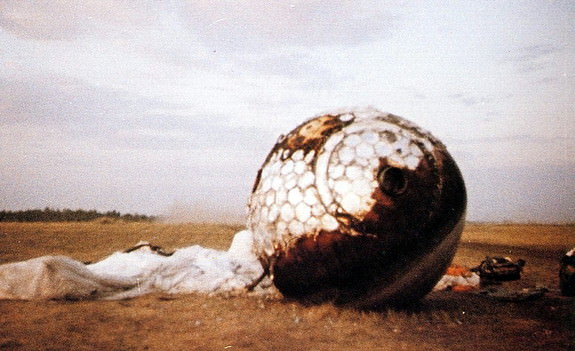
Gagarin’s flight began with his takeoff at the Baikonur Cosmodrome and ended with him parachuting safely to the ground in Kazakhstan one hour and forty-eight minutes later. During the flight, he was said to have been humming “The Motherland Hears, the Motherland Knows”, a patriotic song composed by Russian composer Dmitri Shostakovich.
According to western sources at the time, Gagarin was also rumored to have said “I don’t see any God up here” during his flight. However, the transcripts contradict this story, which appears to have been a reference to a remark Khrushchev had made after the flight and was falsely attributed to Gagarin. What he is known to have said during the flight was: “The Earth is blue… How wonderful. It is amazing.”
Retirement and Death:
Gagarin gained worldwide fame and recognition after the flight, touring Italy, Germany, the United Kingdom, Canada and Japan before returning home to Star City to continue his work with the Russian space program. He was no longer allowed into active service given his celebrity status, the government fearing that they might lose their poster boy in an accident.
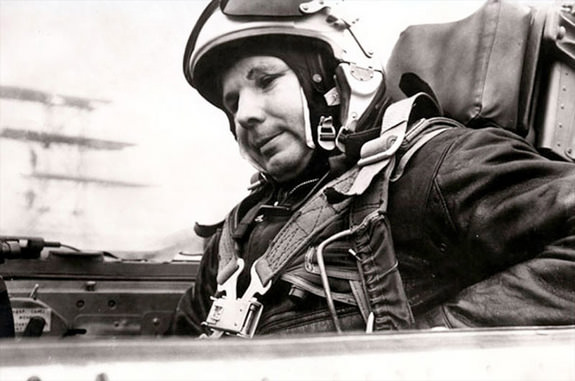
This would prove to be an ironic decision, considering that seven years later, he died in an accident during a training flight. This occurred on March 27th, 1968, when Gagarin’s plane crashed and he and his instructor were killed. For many years, the circumstances surrounding the accident remained shrouded in mystery, and were the subject of much speculation and rumor.
In 2013, the truth about his death was finally revealed when the report detailing the incident was declassified. In an article that appeared on Russia Today, former cosmonaut Aleksey Leonov shared the details of the report, which indicated that the crash was the result of an unauthorized Su-15 fighter flying too close to Gagarin’s MiG, thus disrupting its flight and sending it into a spin.
Legacy:
In Russia, and around the world, Gagarin has gone down in history as one of the greatest astronauts/cosmonauts of all time and one of the biggest contributors to human space flight. For his accomplishments, he has been immortalized by numerous countries, and in countless ways.
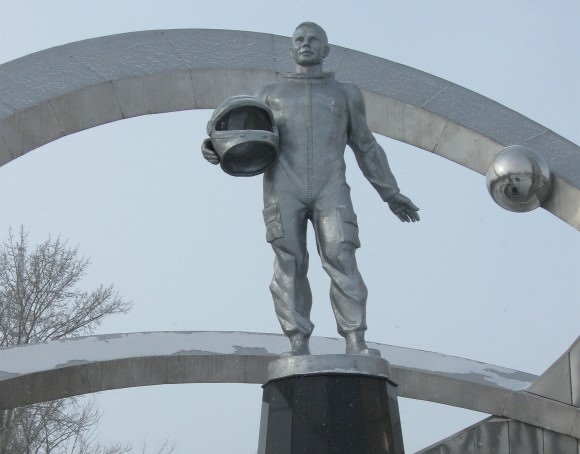
In addition to commemorative coins, a hockey cup named in his honor and several commemorative stamps, he was given the title of “Hero of the Soviet Union” – a privilege reserved only for a select few. Numerous statues have also been erected in his honor, such as the one that towers over the town square in Karaganda, Kazakhstan (shown above).
Since 1962, April 12th has been celebrated in the USSR, and later in Russia and other post-Soviet states, as the Cosmonautics Day, in honor of his historic flight. In 2011, it was declared the International Day of Human Space Flight by the United Nations. Since 2001, Yuri’s Night, an international celebration, is held every April 12th to commemorate milestones in space exploration.
The Cosmonaut Training Center in Star City was renamed the Yuri Gagarin Cosmonaut Training Center in 1969, which was visited by Neil Armstrong during his tour of the Soviet Union.
The launch pad at Baikonur Cosmodrome from which Sputnik 1 and Vostok 1 were launched is now known as Gagarin’s Start. The village of Klushino where he was born was also renamed Gagarin in 1968 after his death, and his family’s house was converted into a museum.
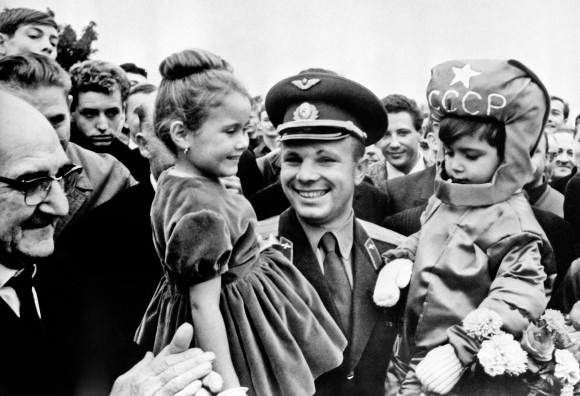
But perhaps the most notable thing about Gagarin, for which he is remembered most fondly, is his smile. As Sergei Korolev – one of the masterminds behind the early Soviet space program – once said, Gagarin possessed a smile “that lit up the darkness of the cold war”.
We have written many articles about Yuri Gagarin for Universe Today. Here’s Yuri Gagarin and Vostok 1, on the 50th Anniversary of Human Spaceflight. And here’s Who was the First Woman to go into Space?, Alan Shepard: Complicated, Conflicted and the Consummate Astronaut, Sally Ride, First American Woman in Space, Passes Away, and Who was the First Dog to go into Space?
If you’d like more info on the Yuri Gagarin, check out the History of Human Spaceflight, and here’s a link to Yuri Gagarin, The First Man in Space.
We’ve also recorded an entire episode of Astronomy Cast all about Space Capsules. Listen here, Episode 124: Space Capsules, Part 1: Vostok, Mercury and Gemini.
Sources:


Timothy Leary was the first man to explore Space and the beyond, remember?